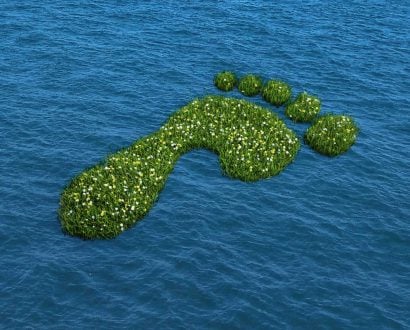There are 55 countries in Africa and, as it stands, they trade far less with each other than they do with the rest of the world. Mona Haddad, Global Director for Trade, Investment and Competitiveness at the World Bank, believes this has had a detrimental impact on the people who live there.
“It has held back the continent’s development,” she tells The CEO Magazine.
When African nations do trade with their neighbors, she notes, the benefits are evident: for instance, Ghanaian exporters of ceramic tiles to Cameroon have seen tariffs drop by 20 percent as a result of a guided trade initiative, one of the first initiatives to be launched under the African Continental Free Trade Area.
“By unlocking trade between African countries, the agreement can be an important driver of inclusive economic growth, poverty reduction and job creation.”
The trade pact, more commonly known as AfCFTA, was brokered by the African Union and is designed to create a single market for goods and services on the continent – and the world’s largest free trade area. Hopes are high that the AfCFTA will soon start to deliver more such good news.
“The AfCFTA is an opportunity to use the existing market for Africa to build scale, rather than importing it from abroad,” Haddad explains.
After all, she continues, the continent is home to 1.4 billion people, a market that is larger – in terms of population – than the European Union and on a par with China and India. “By unlocking trade between African countries, the agreement can be an important driver of inclusive economic growth, poverty reduction and job creation.”
An ambitious undertaking
In figures, the World Bank has put the value of the AfCFTA as hugely significant. Not only could it potentially double intra-African trade by 2035, but it could lift 50 million people out of extreme poverty, with income gains totaling US$571 billion.
Removing trade barriers would help African economies diversify by taking part in regional and global chains, Haddad explains.
“That would offer the opportunity to expedite industrialization and reduce their dependence on exports of commodities, which can be highly volatile,” she adds. “And it would generate more and better-paid jobs, especially for women and young people.”

“Members also plan to harmonize domestic policies and regulations on investment, competition, ecommerce and intellectual property rights.”
However, Haddad knows that AfCFTA is an ambitious undertaking.
“We’re talking about much more than simply lowering tariffs on trade in goods and services,” she admits. “Members also plan to harmonize domestic policies and regulations on investment, competition, ecommerce and intellectual property rights.”
Yet everyone involved is driven by the potential results.
“Deeper integration in these areas would help build more efficient markets, improve competitiveness and attract more foreign direct investment into industries such as agribusiness, manufacturing and services,” Haddad explains, adding that World Bank research shows that the agreement could increase intra-African cross-border investment by 68 percent and total foreign direct investment (FDI) by more than 150 percent.
A pact for the future
According to Haddad, there are several reasons why a single market is so important for the future of Africa.
”First, lowering trade barriers within Africa is a way to counter the potentially disruptive economic impact of rising protectionism elsewhere in the world,” she says. “The creation of a single market makes Africa a more attractive destination for trade and investment.”
And this is all in addition to the significant demographic shift the continent is currently undergoing.
“Africans see the AfCFTA as a way to harness the energy, the dynamism and the ambition of young people, and to create more opportunities for them.”
“By 2050, Africans will constitute one-fourth of the world’s population. In contrast to some more industrialized regions, Africa’s population is getting younger, not older,” she says.
“Africans see the AfCFTA as a way to harness the energy, the dynamism and the ambition of young people, and to create more opportunities for them.”
There is also the solar, wind and hydropower potential, which mean the continent is uniquely placed to take advantage of the transition toward net zero carbon emissions and clean energy.
All-inclusive
In fact, green energy is one of the areas where Haddad spots the most potential for the AfCFTA.
“Even though African countries receive only a modest share of global cross-border investment, the fastest-growing sectors are those associated with green energy transition, which is consistent with the global trend,” she says.
Haddad describes trade in services, particularly digital services, as another area of potential.
“Globally, services account for more than two-thirds of GDP, twice the combined shares of agriculture and industry. And services employ more workers and generate more jobs than any other sector,” she says.
“It offers economic opportunities for Africa’s women, young people and small businesses. And services like logistics and IT will help Africa tap into regional and global value chains, which are important drivers of growth.”
Trade in services is also more inclusive, offering opportunities to people who would otherwise be sidelined from the market.
“It offers economic opportunities for Africa’s women, young people and small businesses. And services like logistics and IT will help Africa tap into regional and global value chains, which are important drivers of growth,” she says.
She cites the auto industry as an example.
“Car companies in Egypt, Morocco and South Africa will benefit when the auto market opens up in Africa,” she says. “That will create demand for components and raw materials from countries such as Zambia, a major copper producer, or the Democratic Republic of Congo, where cobalt for lithium batteries could be mined and processed.
“As investment in critical minerals comes to Africa, it is essential that value addition also be created within Africa.”
In the longer-term, Haddad expects opportunities for regional value chains to emerge as they strengthen and reach markets outside of the continent. “Some countries are already negotiating free trade agreements that can serve as anchors for regional value chains to export to larger markets,” she says.
For instance, Kenya is already in negotiations with the United States, and Morocco is positioned for significant FDI in the automotive value chain linked to the European Union.

“In cooperation with the WTO and the AfCFTA Secretariat, the World Bank has conducted audits of the domestic regulations in 54 African countries, identifying those that could potentially inhibit trade in services.”
But that doesn’t mean it’s all smooth sailing, even if all countries but Eritrea have signed on. While trading under the agreement officially kicked off on 1 January 2021, to fully realize the agreement, policy reforms and trade facilitation measures – the simplification, modernization and harmonization of import, export and transit processes as defined by the World Trade Organization (WTO) – are still needed.
This is where Haddad and the World Bank are playing a role, supporting with financial, research and technical assistance. Since 2019, the Bank has also been involved in negotiating and implementing the agreement.
“In cooperation with the WTO and the AfCFTA Secretariat, the World Bank has conducted audits of the domestic regulations in 54 African countries, identifying those that could potentially inhibit trade in services,” Haddad says.
It is, she continues, an important step toward harmonizing regulations on subjects such as cross-border investment, ecommerce and intellectual property.
A bright future
It’s still very early days, but for the AfCFTA to reach its full potential, Haddad says buy-in from civil society and the business community is crucial.
“They are the ones who stand to benefit from the agreement and so they will need to build capacity and participate in consultations with government officials and other stakeholders,” she says.
Beyond that, there is also an urgent need for infrastructure improvement.
“We have seen how trucks can be backed up for days at some border crossing points. Meanwhile, food is spoiling and engines are spewing more carbon dioxide into the atmosphere,” she says.
“African nations will also need to improve the business environment to attract investment and encourage entrepreneurship. Countries can upgrade their legal and regulatory frameworks by conforming to the provisions of the AfCFTA’s investment protocol.”
“We must be realistic about the obstacles to overcome. But African leaders, civil society and the business community understand the obstacles better than anyone and they have the will and drive to surmount them.”
If Africa is to realize its continental trade objectives, skills development will be crucial.
“I cannot emphasize that enough,” Haddad says, adding that also key are logistics upgrades, enhanced transparency in regulations and reduced corruption.
“We must be realistic about the obstacles to overcome. But African leaders, civil society and the business community understand the obstacles better than anyone and they have the will and drive to surmount them.”
As Africa looks forward to the future, Haddad is optimistic about its success.
“This is a very exciting time for Africa. It has vast human potential,” she enthuses. “With the right trade and investment policies, the continent will have a very bright future.”







